How to Measure Visual Comfort in Buildings
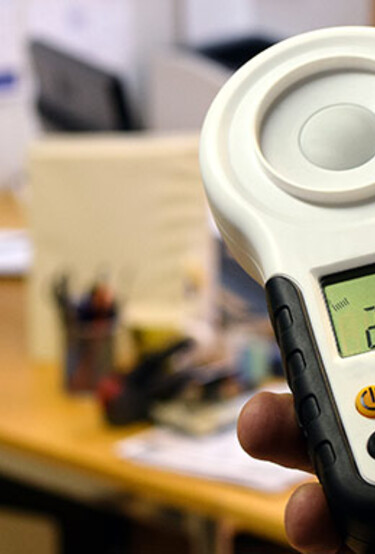
Just like thermal comfort, acoustic comfort, and air quality, visual comfort should be a major consideration when designing buildings that promote occupant wellness. What exactly is visual comfort? Visual comfort is characterized by a sufficient amount of natural light (and, secondly, artificial light), good glare control, and access to views of the outdoors.
While there are tools and software applications to evaluate some aspects of visual comfort during the design phase, what happens once a building is occupied? What methods are available to measure whether we’ve met the design specifications and occupants’ expectations?
We asked natural light metrology experts at the Saint-Gobain Research Centre Compiègne to shed light on this issue for us.
Top Tools for Measuring Lighting Solutions in a Space
It’s possible to measure the amount of light, expressed in lux, using a device known as a lux meter. There are several types with different sensitivities to angle, spectrum, intensity, and degrees of precision. For instance, ultra-fine precision allows you to take measurements in very low lighting conditions, while less precision would suffice for measuring ambiance. In terms of size, wired lux meters (Fig. a) are available, as well as ultra-compact lux meters with a sensor and display built into a small box (Fig. b).
Wired lux meters are generally used for research purposes to establish the characteristics of a process or a product. Ultra-compact lux meters are perfectly suitable for ad hoc measurement, such as for checking lighting levels once a building is completed. For ongoing measurement (for example, over the course of a day or a week), the device must be equipped with a data acquisition and storage system.
At Saint-Gobain, we have developed our own “MC Lux box” devices (Fig. c) based on small Texas Instrument sensors linked to a Raspberry Pi that records the data. These lux meters have the advantage of being wireless and very discreet. This makes it easy to place a few in a room to establish lighting distribution and measure light autonomy. Ultimately, the choice of measuring device is really based on the intended purpose.
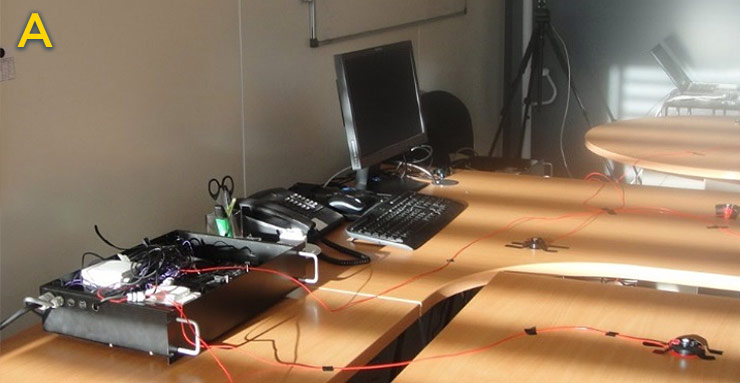
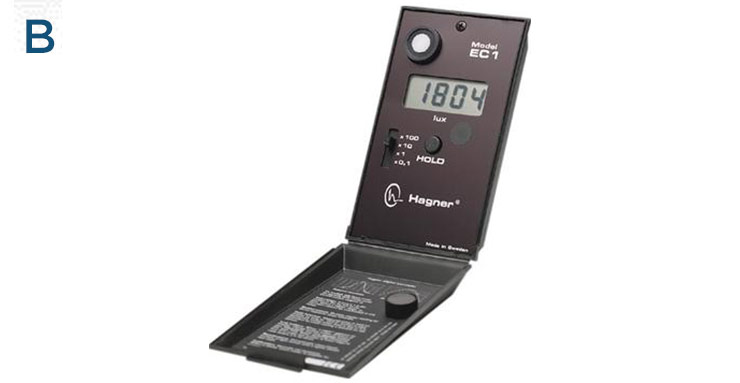
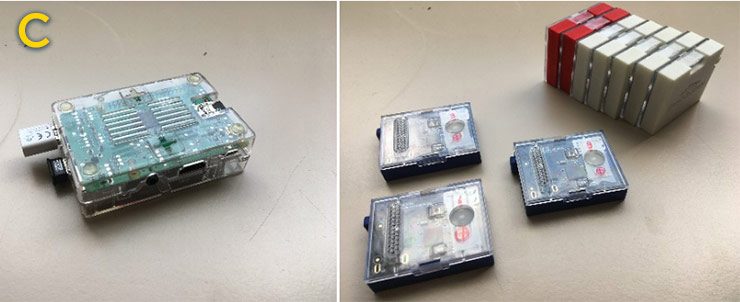
Wired lux meters (a), Compact lux meters (b), Raspberry Pi and MC Lux box (c)
What About Glare? Can That Be Measured?
At present, there is no commercially available equipment for all-in-one glare measurement. To measure glare, you must first measure luminance1, which can then be used to calculate metrics that can then be linked to the likelihood of glare. Academic-scale measuring equipment allows you to measure the intensity of light in a scene with different exposure times. You can then evaluate the light that is received by the eye across a dynamic range. This is what is known as high dynamic range (HDR) photography. This equipment requires the use of HDR cameras and luminance meters (Fig. a and b below).

Glare measurement devices ((a) and (b)) are used to produce HDR images (c) to identify glare sources
However, results based on the same measurement can be subject to different interpretations. In fact, it is entirely possible to measure and visualize what the eye sees in terms of light distribution, but how the eye reacts remains a matter of debate. Luckily, there are some glare metrics, such as Daylight Glare Probability (DGP), and luminance ratios, which correlate well to people’s experiences, although research into this subject is still ongoing. Those metrics could be measured using the devices described above.
Non-Visual Effects of Light
The non-visual effects of light are now recognized as important to comfort and health. Although some designers are beginning to take them into account, particularly since the WELL label was developed, how well are these effects understood and measured?
We can measure some of the non-visual effects of light based on measurement of light intensity and spectrum. In fact, we now know which wavelengths the eye and the human body are most sensitive to. We also have a slightly better understanding of the link between light intensity and the activation of certain biological functions.
The WELL2 label recently introduced the concept of melanopic lux, which evaluates the impact of lighting conditions on our health. This helps us understand a certain kind of light's ability to stimulate our body correctly throughout the day. Although melanopic lux3 can be measured by sensors with classic lux meters, they must be placed at eye level, which means they are not commonly used today. Some universities have developed prototypes of glasses with this type of sensor, but they are not available commercially yet.
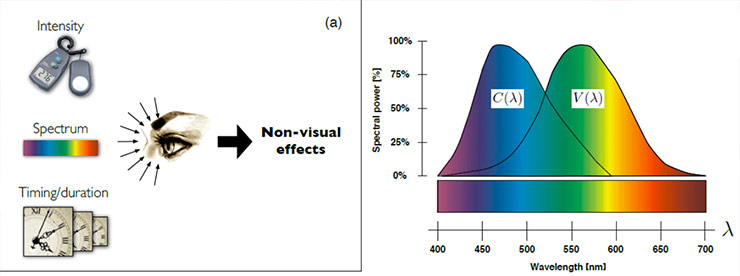
Factors affecting the non-visual effects of light (left) and the spectral response of our visual system (right), i.e., the curve of visual or photopic sensitivity V(λ), and the curve of melanopic sensitivity C(λ)(Source: Daylighting, Artificial Lighting and Non-Visual Effects Study for a Residential Building, J. Mardaljevic, M. Andersen, N. Roy, J. Christoffersen)
Another factor that is more difficult to characterize but plays a role in these non-visual effects of light is the person’s lighting history. Knowing which light a person has been exposed to — and for what length of time — during a given period requires ongoing, constant measurement, which is hugely tricky in practice.
To What Extent Can We Measure More Experiential Factors, Such as Views of the Outdoors?
We know that having a view of the outdoors is important for health and that there are benefits to having a connection to nature. Researchers are developing metrics to evaluate these factors quantitatively, but they are far from being standardized. Someday, neuroscience may also give us a greater understanding of how to measure the effects of views on the brain. In the meantime, we at Saint-Gobain have developed standardized questionnaires based on sociology that look at the individual’s experience and perception.
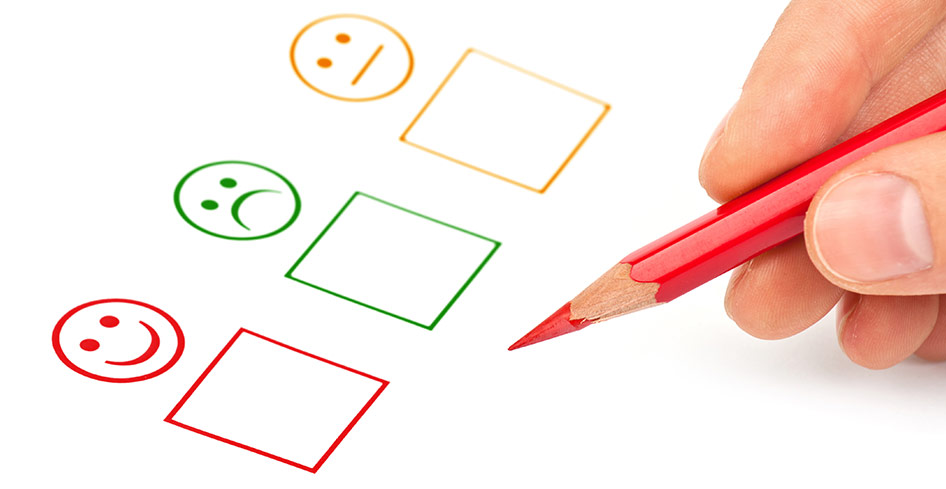
Sociology-based approaches are now used to evaluate more qualitative aspects of visual comfort
Once the Measurements Have Been Obtained, How Do We Interpret the Results?
To analyze the data, we refer to the recommendations and principles described in ergonomic guides, the labor code, and guides from the International Commission on Illumination (CIE Division 34). Historically, these baselines were developed for artificial lighting. We account for this bias by using the new standard EN 17037, an initial standard for visual comfort in buildings with natural light. This standard approach includes more qualitative aspects often overlooked in other standards.
Another approach involves using concepts of visual comfort described in building labels (LEED, HQE, BREEAM, WELL, etc.) that pre-date EN 17037. These rely on similar metrics, such as quantity of light, glare control, etc., although the suggested interpretations may be different. As we better understand the effects of visual comfort on human health and performance, the science of measuring visual comfort will gain traction in the building industry.
- Luminance describes the quantity of light emitted by, passing through, or reflected from a specific surface and reaching our eyes when we look at this surface from a particular angle. Illuminance describes the quantity of light occurring on a certain surface. Luminance and illuminance are measured in cd/m² and lux, respectively.
- https://www.wellcertified.com/
- Illuminance adjusted to the eye's “non-visual” response, i.e., the sensitivity of the ipRGC cells, and used to measure the amount of light that is “useful” for regulation of the biological clock.
- http://www.cie.co.at/technical-work/divisions/division3/division-publication